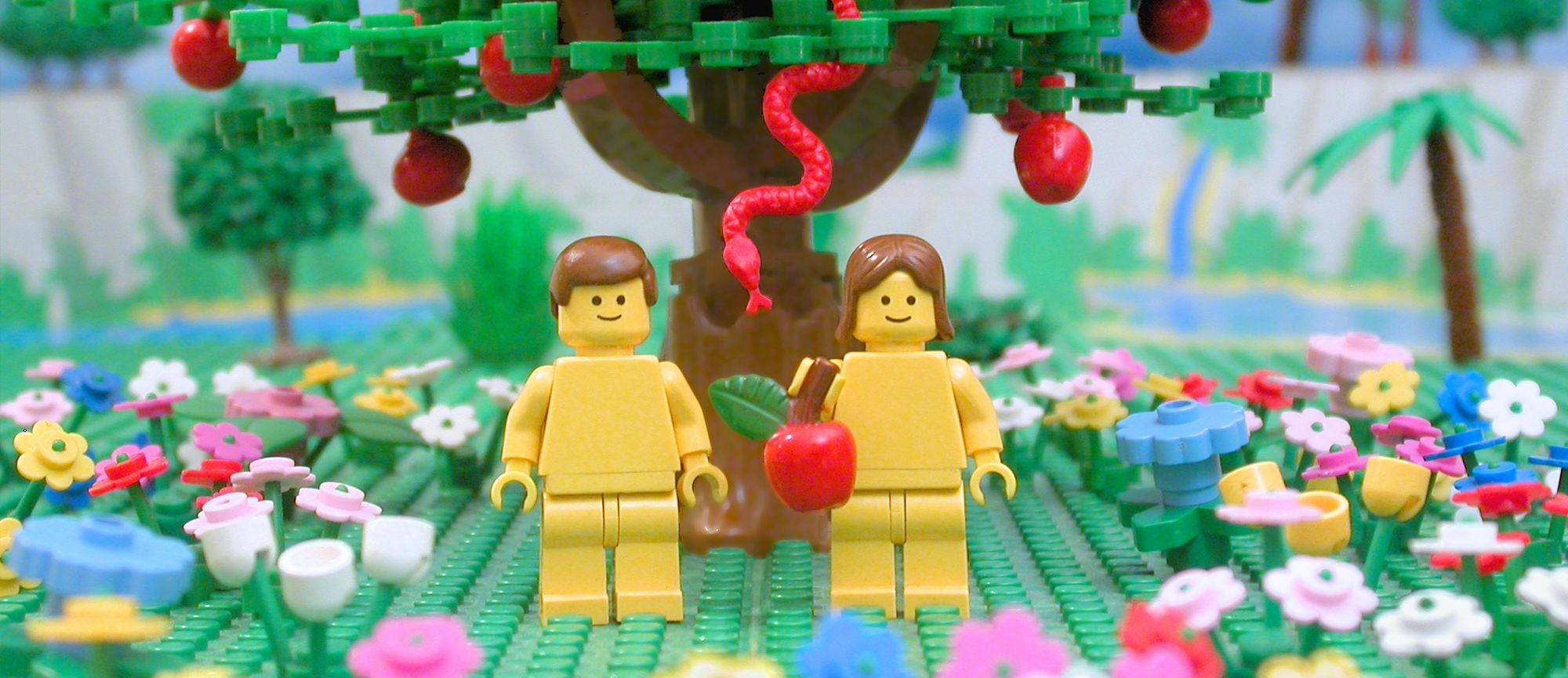The Brick Bible
To deepen our secular learning about the stories from the Bible, we turn to a retelling of the Bible using LEGO bricks.

We've been learning about stories from the Hebrew Bible (a.k.a. Old Testament) in Level D of Exploring the World through Story (learn more about this curriculum in my earlier post). As I've mentioned before, we're secular homeschoolers, but learning about religions has been important to us.
I am, and was raised, atheist, so I'm learning right alongside Wanda. I've done a bit of learning about religions over the years, especially Judaism 'cause it's cool, but my attempts to actually read the Bible have not... sparked.
About 15 years ago I finally read the Book of Genesis, kinda, thanks to The Brick Bible. Equal parts serious and ridiculous, and summing up to something sublime, The Brick Bible is a visual retelling of the Bible entirely with LEGO bricks. The result is a curious mix of both reverence and irreverence.

What I especially appreciate about The Brick Bible is that it doesn't leave anything out. Creator Elbe Spurling spent 12 years creating The Brick Bible, and in her words:
One of the things that distinguishes The Brick Bible from other illustrated versions of The Bible is its goal to treat all of The Bible’s content as equally worthy of inclusion, since it is, after all, in The Bible.
The Brick Bible further aims to present the stories as The Bible itself presents them. There are plenty of other illustrated Bibles out there whose authors take a free hand in re-writing the Bible’s stories as they see fit, adding or subtracting content, providing questionable re-interpretations, and foisting onto them a modern sense of morality or theology simply not present in the original.
Although well-meaning, these authors fail to let the Bible speak for itself, and don’t provide the reader an experience that is much like reading the actual Bible at all.
While there is really no substitute for reading The Bible itself, The Brick Bible endeavors to come as close to that experience as possible for people who wouldn’t normally read the Bible all the way through on their own. And for those who are already familiar with the Bible, it offers the chance to brush up in a fun way, or to reconsider what they have read before.
A warning, in case it isn't obvious: The Brick Bible is a fit for my kid, but won't be a fit for most kids. The Bible has a lot of sex and violence, and it is presented explicitly, if cartoonishly, in The Brick Bible.
Spurling has created a totally separate version, The Brick Bible for Kids, that is likely much more appropriate for homeschooling use.
But for us, fuck appropriate. We went for the real deal.
I haven't read through all of The Brick Bible—there is a lot, this has been a massive undertaking by Spurling—but after most of our Exploring the World through Story lessons, Wanda and I would then read The Brick Bible version of the same story. Wanda loved getting a different retelling, and we both thought it was interesting to see how our kid-friendly curriculum text (Treasury of Bible Stories, by Donna Napoli for National Geographic) had been sanitized.
Whether you choose The Brick Bible for Kids, or the original flavor, I recommend considering this add-on for your learning about the Bible. Spurling has also adapted the New Testament, also available at The Brick Bible, and has started work on The Brick Book of Mormon.

